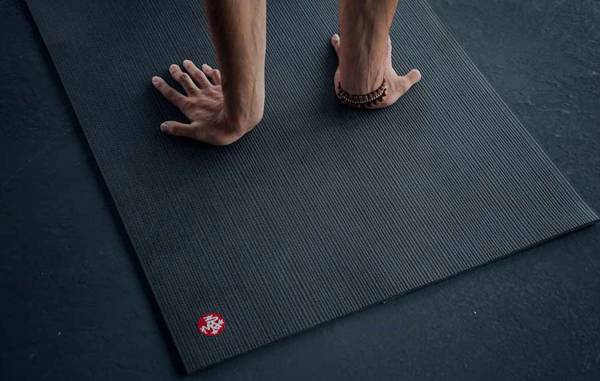Manduka yoga mats are designed to be around for the long haul. Whether you are a beginner or a yoga master, these mats will last many decades. It doesn’t matter how often you exercise or how much you sweat, as Manduka yoga mats can handle virtually any situation.
However, with so many other brands making the same claims, how can practitioners know for sure that Manduka offers the best mat for yoga? To find this answer, one must take a look at both the mats themselves and Manduka’s overall approach to sustainability.
The Different Types of Manduka Yoga Mats
There are many different types of Manduka yoga mats. Whether you want a thick yoga mat, or one made of natural rubber, there are many varieties to accommodate your interests. As listed on the company’s website, the eight main categories of Manduka yoga mats are as follows:
- Black Mat Pro
- Manduka Pro – Black Beauty
- Manduka Pro – Black Magic
- PROlite
- eKO
- eKO Lite
- eKO Lite – Off the World
- eKO Superlite
The black mats available with the Pro and Manduka Pro lines are the best choice for ongoing use in the same location. As a thick yoga mat, these varieties are larger and more cushioned than some of the other lines. In addition, their rich yet neutral color also guarantees that they will blend in with most decors.
As far as the differences among the Pro and Manduka Pro lines, there are very few. The Black Mat Pro has been around the longest, but the other two have better designs. Both improve on structure and thickness, while the Black Beauty line offers a more vibrant color.
For those who want a lighter mat with more colors to choose from, there is the PROLite line. Weighing less than a 5-pound bag of sugar, these mats work well for travelers. They are also a good choice for practitioners who go to the gym for their yoga sessions.
Finally, there is the eKO line of mats. All are designed with natural tree rubber, a material that is created without releasing toxins in the environment. Also, most of the eKO mats come in a rich array of colors. The only exception is the Off the World mat. Since the proceeds from this mat go to the Off the World foundation, the mat itself is designed according to their brand.
Beyond that, the only other differences are the size of the mats. The eKO Lite and Superlite are the smallest, and they are designed for yoga on-the-go. Meanwhile, the regular eKO mat is the largest, making it suitable for stationary use.
It should also be noted that despite the different lines, all Manduka yoga mats share the same similarities. Their unique cell structure traps sweat, so yoga practitioners do not have to worry about slipping or falling down. The mats can also handle hardwood floors or even outside surfaces, (like grass or cement).
Lastly, all the mats are easy to clean. Each has their own unique set of instructions, but for the most part the mats can be cleaned through sponging, air drying or application of a sustainable solution. In some cases, Manduka suggests buying one of their cleaning sprays, but that is optional.
Manduka as a Sustainable Company
Structure should not be the only concern when buying a mat for yoga. While a person should get the best yoga mat for their money, they should also consider the philosophy of the company they’re buying from. If a company does not care about sustainability, they might create yoga mats from PVC, or Polyvinyl Chloride.
According to Pablo Paster, author of “Ask Pablo: What is the Best Choice for Yoga Mats,” this chemical not only causes cancer, but it also releases harmful emissions into the air. Paster further adds that these emissions often give people a false high, as they associate the odor with the “new car smell.”
None of these consequences happen with Manduka yoga mats, as they do not use PVC in their manufacturing. To prove this to their customers, Manduka gained Oeko-Tex certification. This is an environmental standard used to determine how many emissions a manufacturer releases into the air. Such is the case even with the Pro lines.
While they do not use tree rubber like their eKO cousins, they still avoid PVC manufacturing. Still, if you are looking for the greenest option, stick with the eKO lines and do not discard your mat. If you want to get another mat, or you become disinterested in yoga, give it to someone else in your family. The high-quality materials within all Manduka yoga mats will still last, even if the mat is passed down to the next generation.
